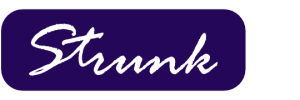Strunk at the ABA’s Virtual Conference for Community Bankers 2021
For the first time, Strunk attended the ABA’s annual Conference for Community Bankers virtually. During the virtual event we hosted a virtual booth, met with many familiar and new faces via Zoom meetings and attended virtual sessions. While a bit different than being together, it remains one of the most anticipated events of the year and we made the most of the connections with bankers and enjoyed seeing everyone.
We welcomed the opportunity to discuss with attendees the latest features offered by our Governance, Risk Management and Compliance (GRC) software Risk Manager, which includes six GRC tools – Risk Assessor, Policy Manager, Controls Manager, Skills Manager, Issues Manager and Vendor Manager. Strunk’s Overdraft Program is always a hot topic of conversation and we were glad to discuss our approach with long-time clients and potential clients.
Attendees had the opportunity to hear from keynote speaker, former NBA star Earvin ‘Magic’ Johnson in his session ‘The Power of Magic’. On top of his athletic notoriety, Magic is a driven and successful entrepreneur who shared what it takes to truly make an impact.
Another interesting session was hosted by Ron Shevlin of Cornerstone Advisors on the five forces shaping the banking industry today. He detailed how challenger banks, big tech, embedded finance, artificial intelligence, and cryptocurrency are affecting our banks and provided areas of focus for community FIs.
Congratulations to the winner of Strunk’s giveaway, a $100 gift card to Amazon – Mayra Rinaldi of Columbia Bank!
We hope to see you all in person next year and to once again host the conference t-shirt station. Until then, stay well.


